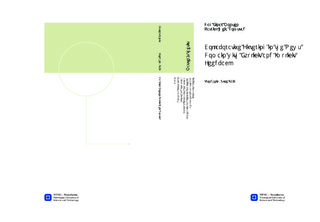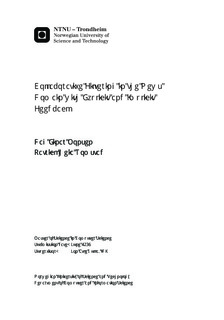| dc.contributor.advisor | Gulla, Jon Atle | nb_NO |
| dc.contributor.author | Monsen, Dag Einar | nb_NO |
| dc.contributor.author | Romstad, Patrick Heia | nb_NO |
| dc.date.accessioned | 2014-12-19T13:41:42Z | |
| dc.date.available | 2014-12-19T13:41:42Z | |
| dc.date.created | 2014-10-01 | nb_NO |
| dc.date.issued | 2014 | nb_NO |
| dc.identifier | 751706 | nb_NO |
| dc.identifier | ntnudaim:11725 | nb_NO |
| dc.identifier.uri | http://hdl.handle.net/11250/253814 | |
| dc.description.abstract | In online recommender systems, we use computerized algorithms to present articles targeted at the preferences of each individual user. One such technique, called collaborative filtering, works by selecting articles that is preferred by users with preferences similar to those of the target user. There are different ways to determine a users preference. A common practice is to ask for it, for instance by offering the user to provide a rating from one to five. Users are, however, often reluctant to provide such information. From a usability perspective, it is better to look at their behaviour, or implicit feedback, and use that to infer their preferences. The main goal of this thesis is to determine whether we can use such implicit feedback in order to improve the accuracy a collaborative filtering method. We have implemented and tested a number of standard machine learning algorithms for mapping implicit feedback to explicit ratings. These algorithms are applied to a news data set consisting of user interactions collected while reading and rating news articles. After the mapping techniques have inferred possible new ratings, the next step is to generate recommendations, which is done with a matrix factorization algorithm. To measure the effect of adding implicit feedback to the recommendations we calculate the root mean square error (RMSE).We have developed a fast and scalable collaborative filtering component and integrated it with a news aggregation service called SmartMedia. The component uses a combination of nearest neighbor search on articles with more than 30% correlation and a time threshold of 20 seconds to infer ratings based on user interactions collected. We show that these methods improve the RMSE by 5.14% compared to using only ratings users have given. Our work shows that utilizing implicit feedback can improve recommendation accuracy in the news domain. The techniques we have developed require less explicit rating to be given from users in order to create good recommendations. Thus we believe that the next generation of recommender systems will be less dependent on explicit rating while still being able to provide high quality recommendations. | nb_NO |
| dc.language | eng | nb_NO |
| dc.publisher | Institutt for datateknikk og informasjonsvitenskap | nb_NO |
| dc.title | Collaborative Filtering in the News Domain with Explicit and Implicit Feedback | nb_NO |
| dc.type | Master thesis | nb_NO |
| dc.source.pagenumber | 140 | nb_NO |
| dc.contributor.department | Norges teknisk-naturvitenskapelige universitet, Fakultet for informasjonsteknologi, matematikk og elektroteknikk, Institutt for datateknikk og informasjonsvitenskap | nb_NO |

